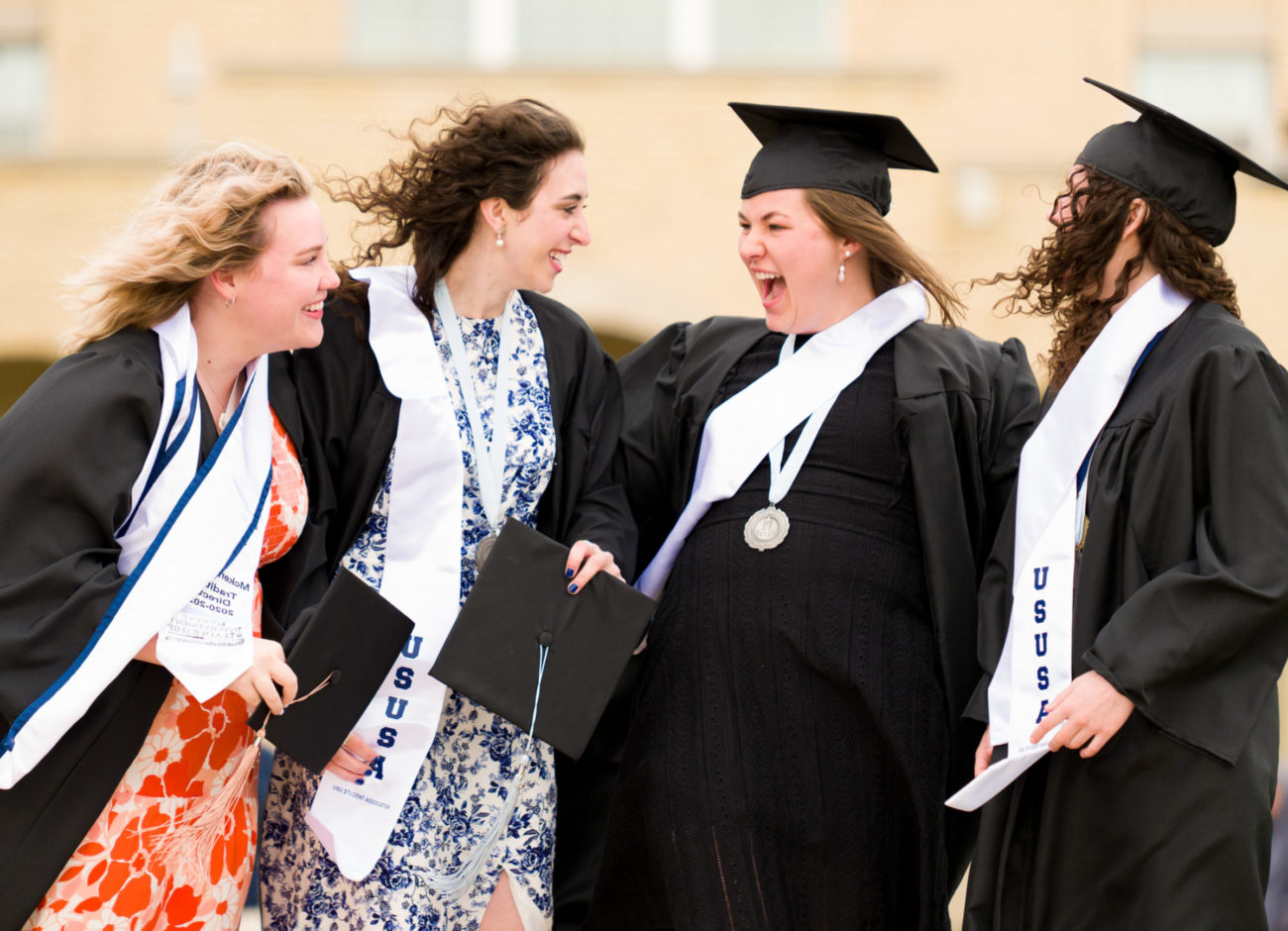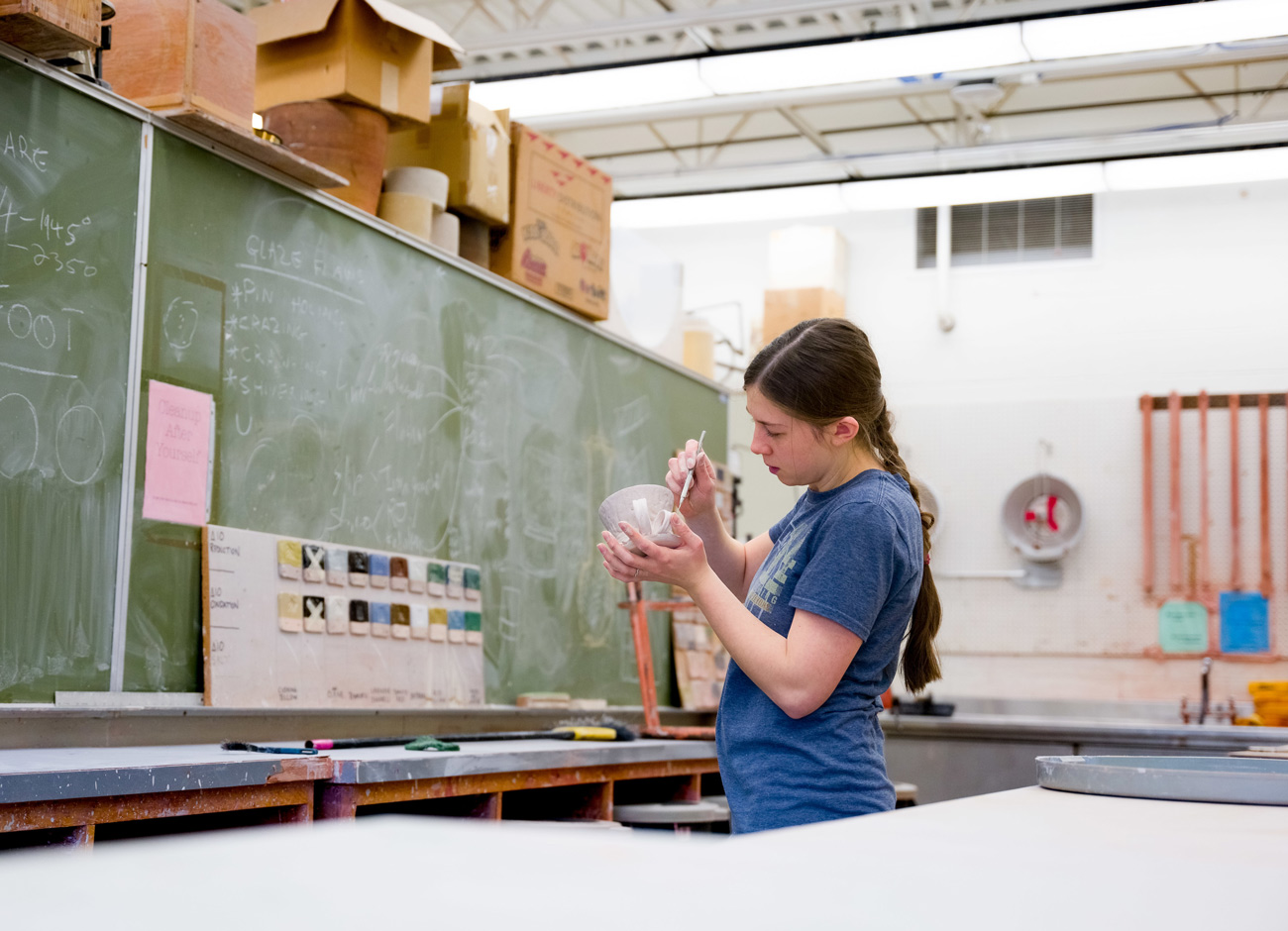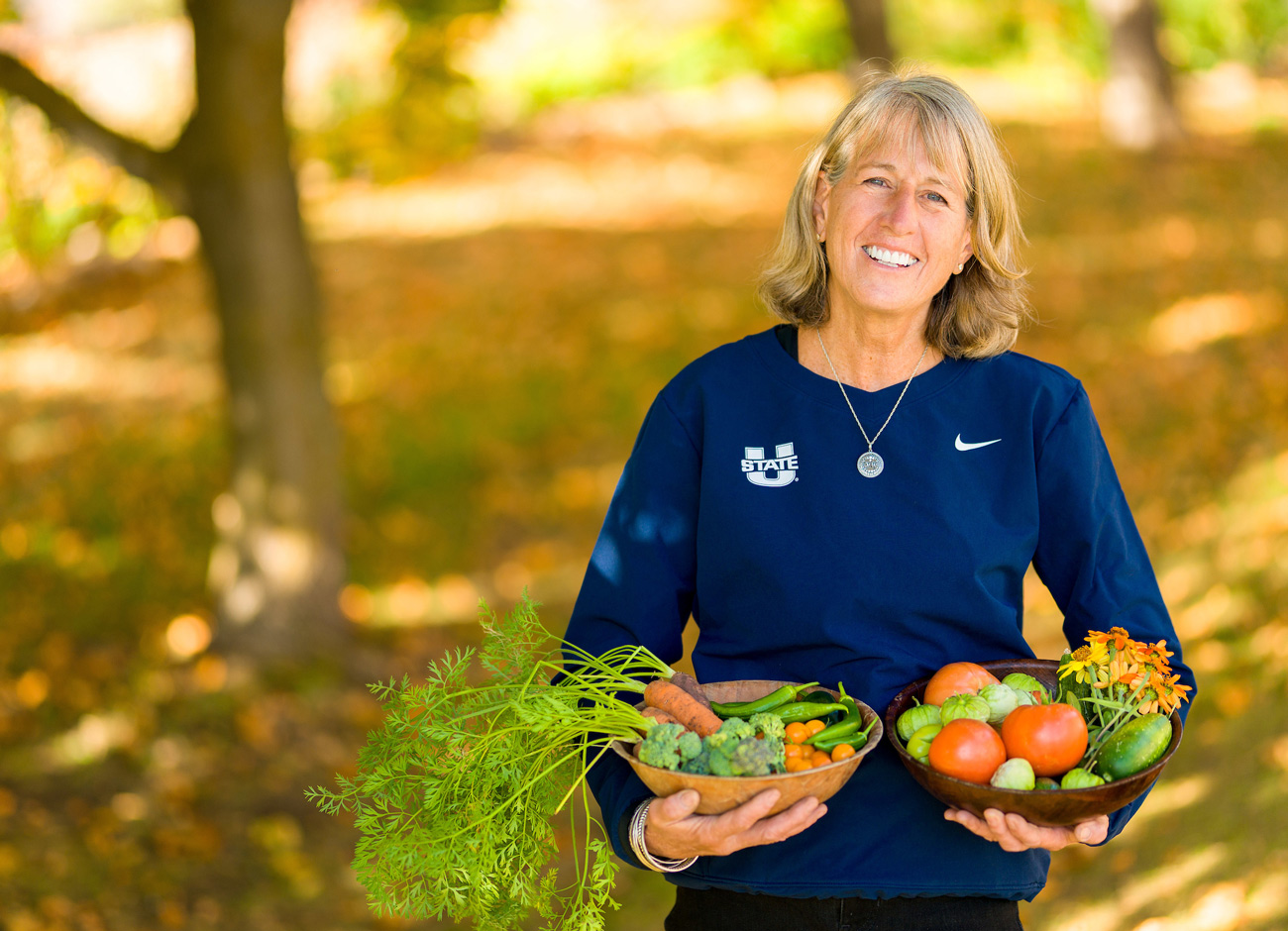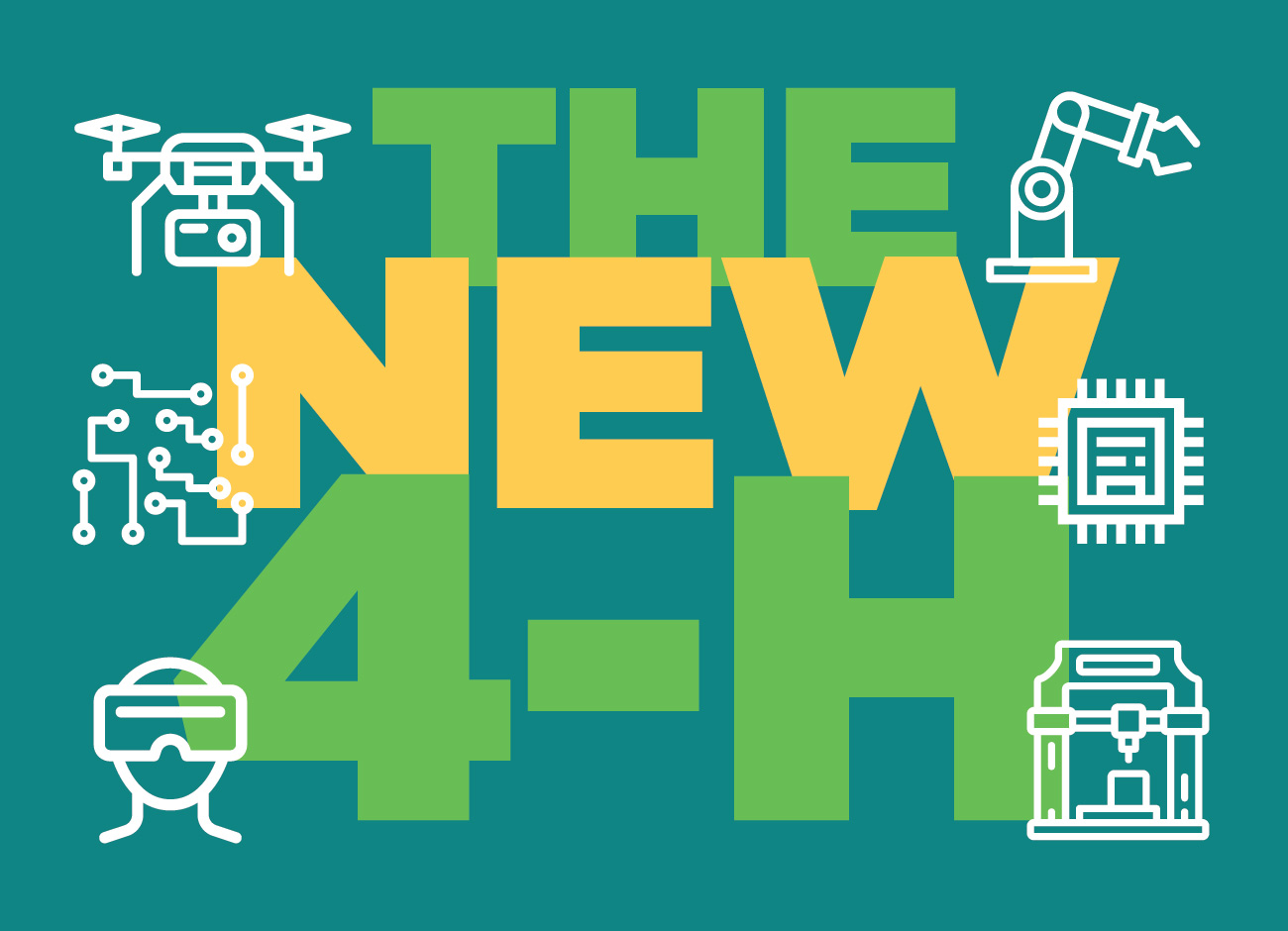Campus Scene: Nothing to Waste
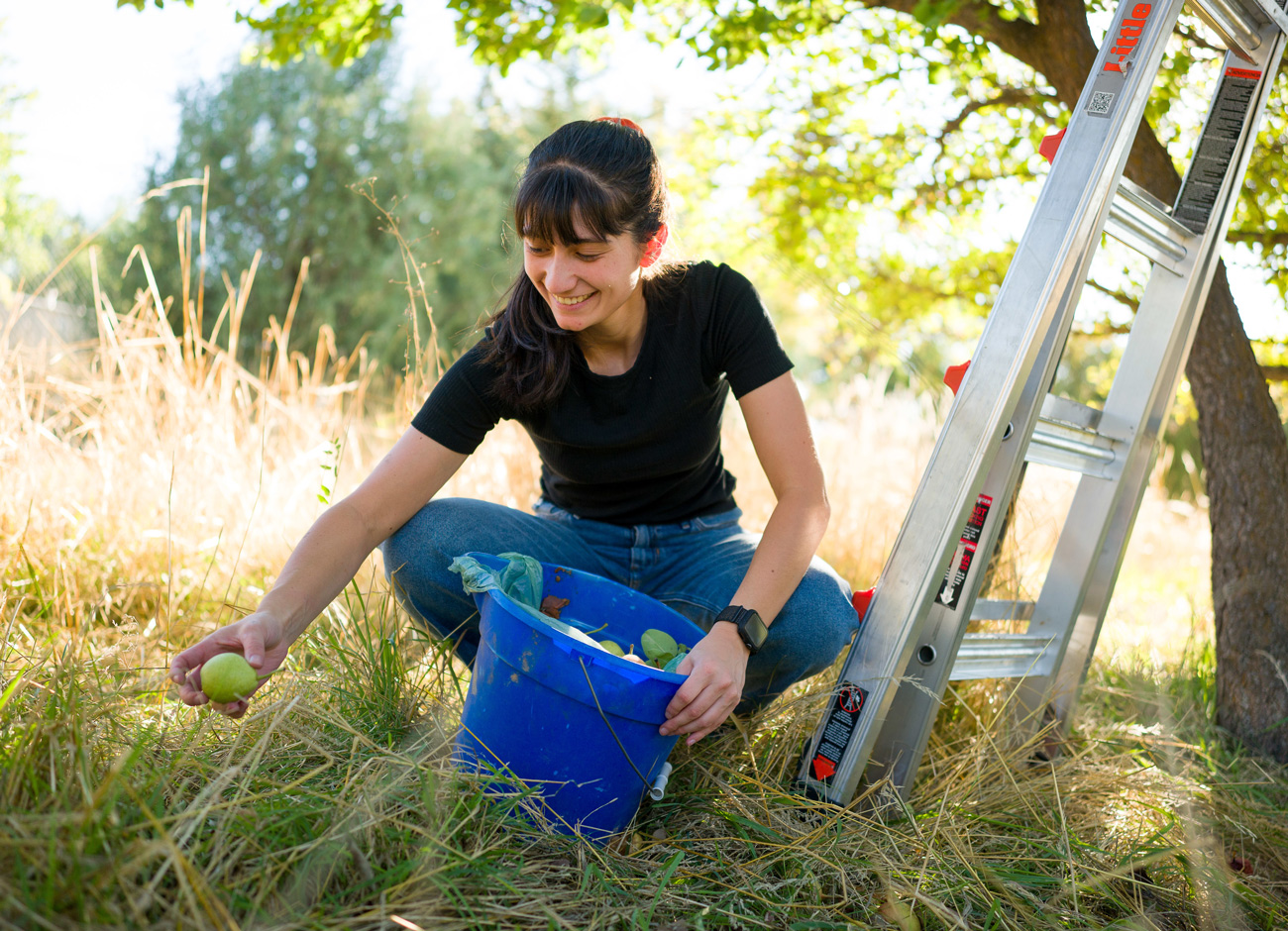
Rustling leaves followed by the satisfying snap of an apple popping off a branch. That is the sound of Utah State University’s gleaning team during peak harvest.
The organization salvages produce destined to become food waste and was founded in 2019 by Kara Bachman ‘21, a master’s student in public health and Amria Farnsworth ’21. The operation is largely run on volunteer labor with one student coordinator orchestrating the logistics of getting feet in fields and timing the harvests around Cache Valley.
“Gleaning dates back to hundreds of years ago when farmers would leave extra grain in the fields for people who were poor,” explains Bachman.
The practice continues today with farmers and individual residences invite volunteers to take leftovers of underripe, overripe, extra, or unconventional produce that would otherwise go to waste.
The idea arose after Bachman, an AmeriCorps intern in the USU Sustainability Office, went on an alternative break trip to Tucson and volunteered with Iskashitaa Refugee Network, a year-round gleaning nonprofit that collects produce that would otherwise rot in fields.
“We knew there were gleaning initiatives across the nation, we just needed to figure out how people got started and do that,” Bachman says.
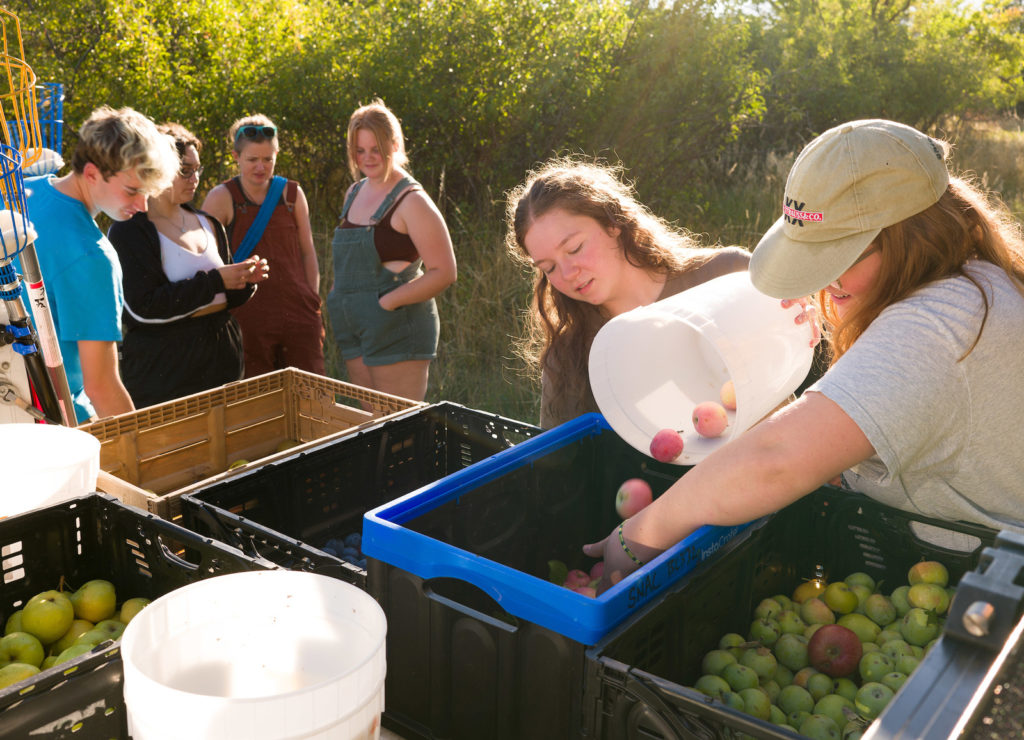
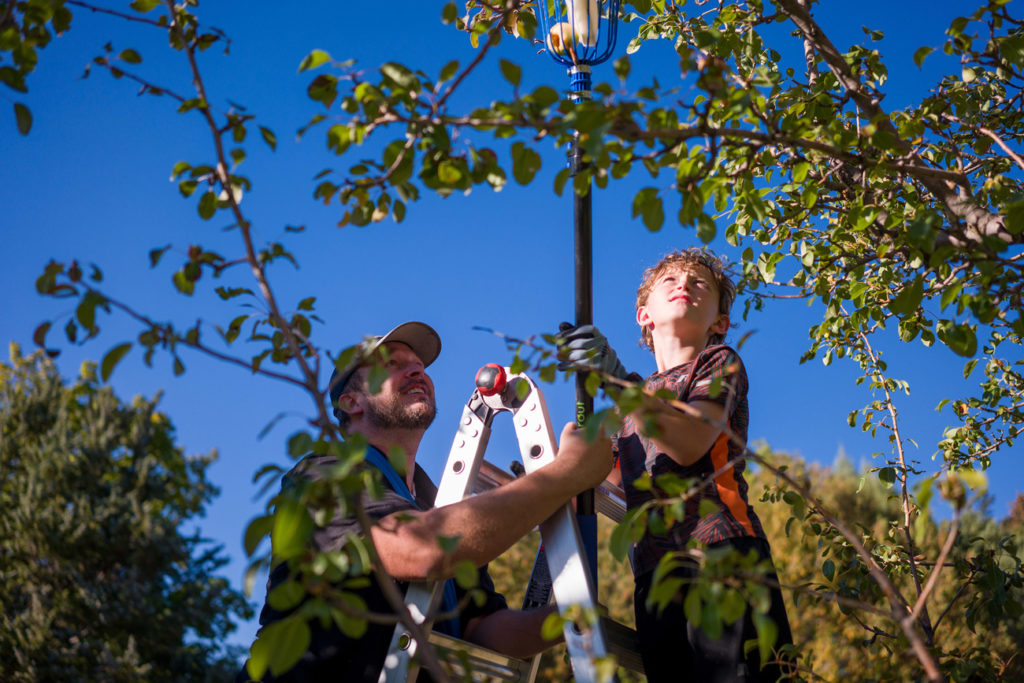
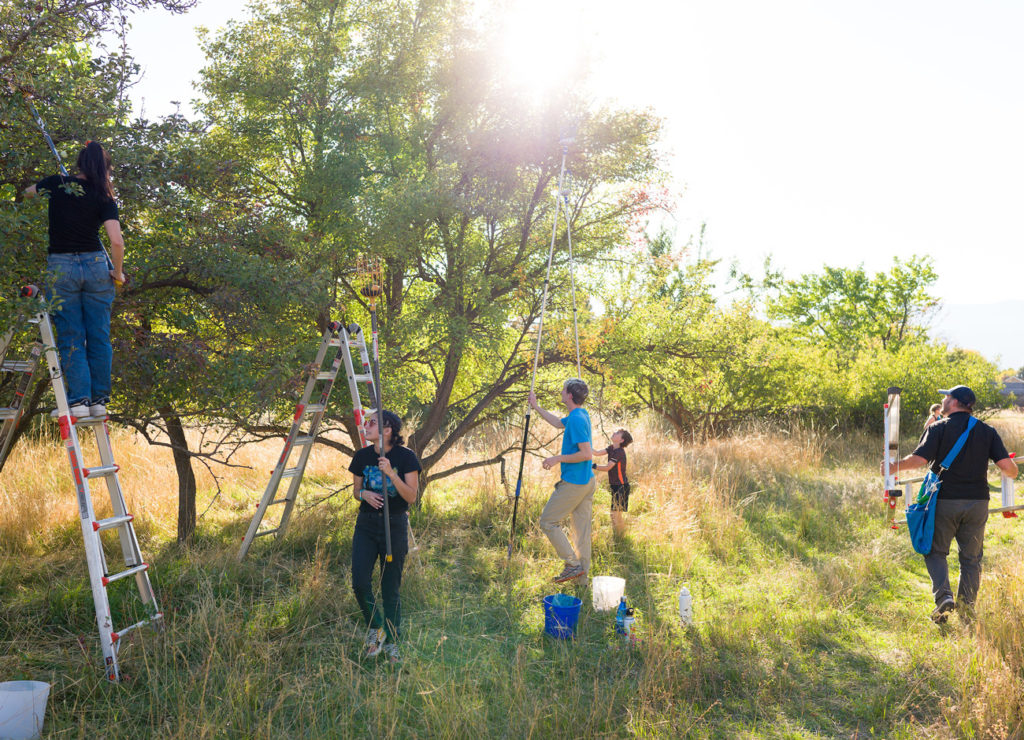
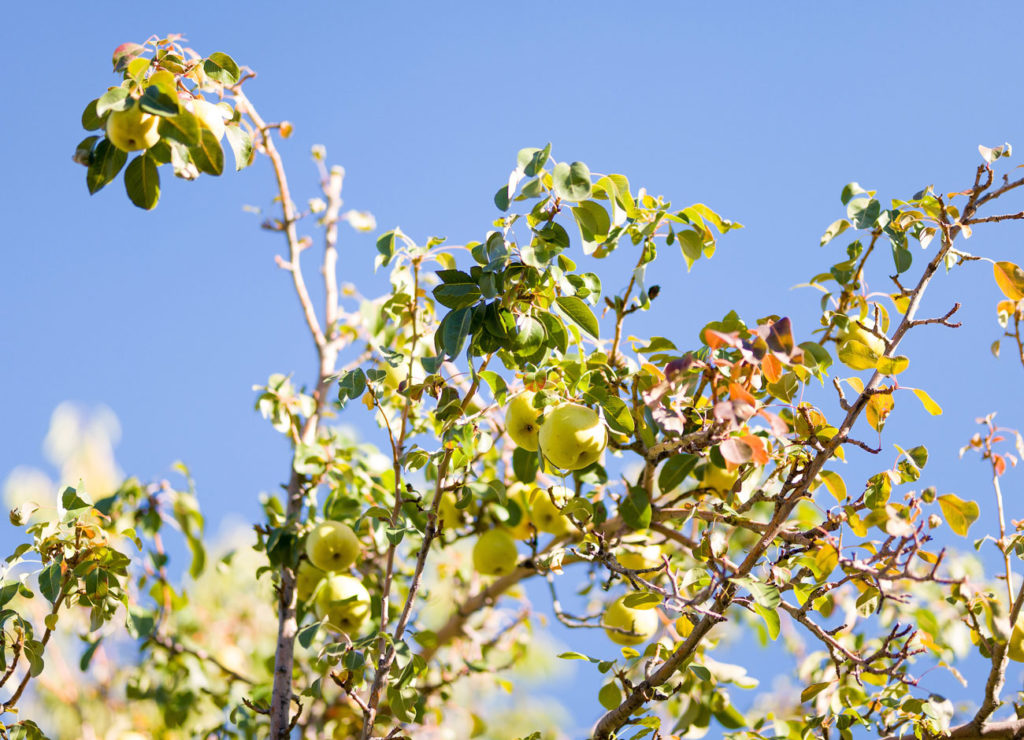
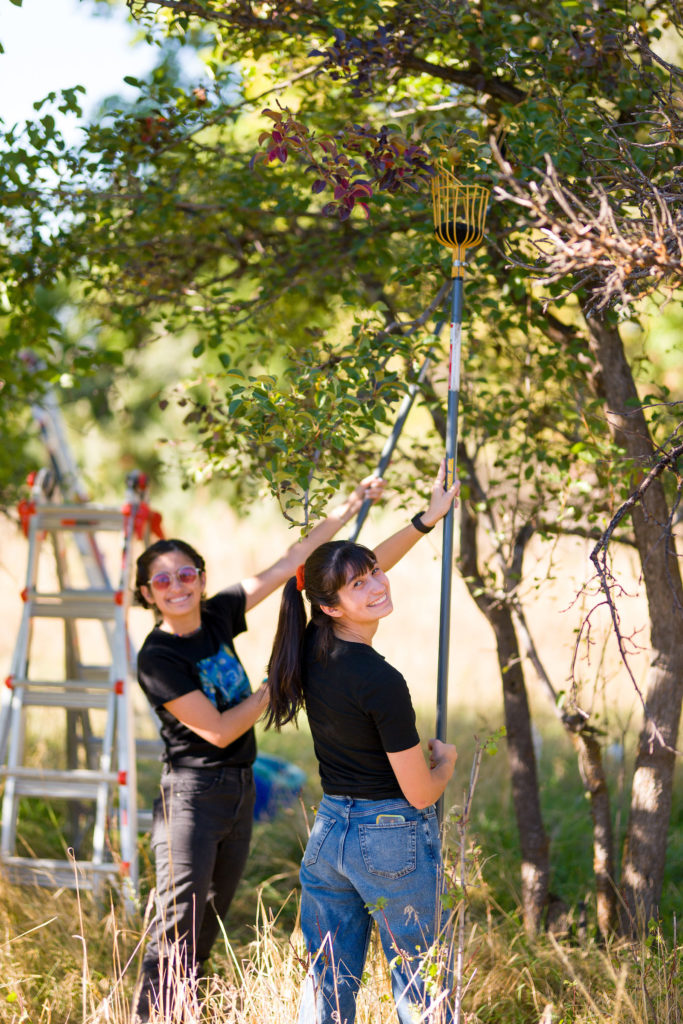
The friends hung posters in local restaurants for people to register their fruit trees and made sign-up sheets for volunteers. Bachman borrowed her uncle’s rusty old red truck and the program took off, harvesting 15,500 pounds of produce. A grant allowed USU to hire its first gleaning coordinator in 2020.
“That person really determines the outcome and involvement of community members,” Bachman says. “They are the ones who have improved the program and made it better.”
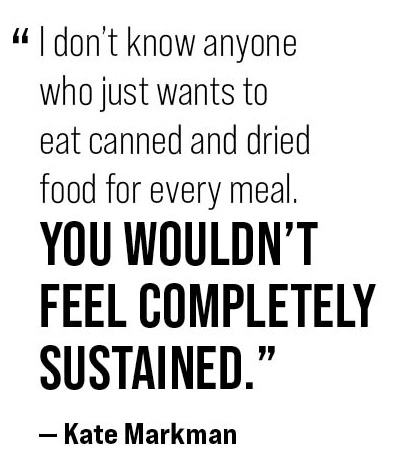
This year’s coordinator is junior Kate Markman, a junior and AmeriCorps member focused on sustainability. She is the behind the scenes queen, organizing an average of three gleaning operations a week during the fall. In the 2022 season, the gleaning team recovered more than 11,700 pounds of produce from USU’s research gardens and yards around Cache Valley.
But numbers alone don’t tell the whole story. This year’s operation was affected by the ongoing drought reducing production of home gardens and a late frost drastically limited the apricot harvest. The bulk of the 2022 harvest was apples and pears donated by older adults or small families unable to harvest or to use everything their trees produce.
“There are so many apple trees in this valley,” Markman says. “A hard thing for me is just accepting that we are not going to be able to harvest everything and get to everyone that wants our services because I don’t have the time to have a session every day of the week. … Each year this program has become stronger and the hope is that each year there will be greater capacity to serve more.”
Unpruned trees or pest-infested fruit can also slow down picking and sorting produce. But ultimately nothing the gleaning team collects goes to waste. Grade A produce appears on the shelves of the Cache Community Food Pantry and the USU SNAC pantry. Nutrition faculty use grade B fruit to make fruit sauces and butter and produce that spoils is composted and used in campus flower beds.
Most of the time USU’s SNAC pantry is stocked with staples and whatever comes off the weekly pallets from the Utah Food Bank or can be recovered from USU Catering and repackaged by volunteers for Aggies facing food insecurity.
“Being food secure is not just having food on the table, it’s having access to a well-balanced diet,” Markman explains. “I don’t know anyone who just wants to eat canned and dried food for every meal. You wouldn’t feel completely sustained living off unperishable foods.”
This time last year she hadn’t heard of gleaning. But now having led the 2022 operation she understands how valuable the program is to people experiencing food insecurity and the people showing up to do something about it.
“I’ve been at Utah State a few years and for a lot of that time my world just existed within the boundaries of campus and I felt really disconnected from the valley I was going to school in,” Markman says. “This is a really great way to see there are so many people living in this valley, doing really great things, that are just really great people that you wouldn’t necessarily brush shoulders with otherwise.”
And it makes a difference she can pluck from a tree and measure.
“So much of food gets wasted in our nation and this food that never would have been able to reach the consumer level and it would have simply rotted,” Markman says. “We are benefiting [on an] environmental level as well as serving our community and those in need. It is just so cool.”
By Kristen Munson
Photos by Levi Sim
Video by Taylor Emerson



